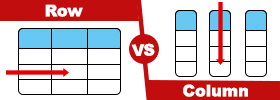Difference between Synthetic Phonics and Analytic Phonics
Key Difference: Phonics is a method which is used for teaching the skill of reading. It describes an association between letters in the alphabets and the sounds used in our spoken languages. Analytic Phonics is also known as Implicit Phonics. In this approach, primarily the analysis of a particular sound within a word or words is done. The focus in on the complete word firstly and later the analysis is done of different components of the word. Unlike Analytic phonics, Synthetic phonics uses blending as the first strategy. It uses a part-to-whole approach in which primarily the sounds associated with letters and letter combinations are understood, and then the sounds are blended in order to pronounce the word.
 Phonics is a method which is used for teaching the skill of reading. It describes an association between letters in the alphabets and the sounds used in our spoken languages. Phonics make use of two main approaches with the perspective of teaching phonics – Analytic and Synthetic Phonics.
Phonics is a method which is used for teaching the skill of reading. It describes an association between letters in the alphabets and the sounds used in our spoken languages. Phonics make use of two main approaches with the perspective of teaching phonics – Analytic and Synthetic Phonics.
Analytic Phonics is also known as Implicit Phonics. In this approach, primarily the analysis of particular sound within a word or words is done. The focus in on the complete word primarily and later the analysis is done of different components of the word. Children avoid pronouncing sounds in isolation to guess the word in this approach. They are rather asked to analyse letter sound relation after getting familiar with the word.
The process initiates with the complete word sight vocabulary and reading books. It also makes use of picture, initial letter and context cues in order to identify the word.
Synthetic Phonics can be easily contrasted with analytic phonics. Unlike Analytic phonics, it uses blending as the first strategy. It uses a part-to-whole approach in which primarily the sounds associated with letters and letter combinations are understood, and then the sounds are blended in order to pronounce the word.
Thus, analytic and synthetic phonics can be considered as two completely different approaches of Phonics. Analytic approaches focuses on letter sound relationships in the context of whole words. On the other hand, Synthetic phonics focus on teaching letter and sound relationship by voicing the sound in isolation.
Comparison between Analytic Phonics and Synthetic Phonics:
|
|
Analytic Phonics |
Synthetic Phonics |
|
Definition |
Analytic phonics focuses more on teaching whole words first and then analyzing on the constituents parts which made up the word. |
In synthetic phonics, the sounds of letters and letter combinations are taught first and later the method is taught to form complete words.
|
|
Approach |
Whole-to-part |
Part-to-whole |
|
Technique |
Word families as rhyming groups are learn which contain the similar spelt words Single syllable words are divided into onset and rime like tr-ick and fl-ap. A spelling pattern is matched with the previous learnt word family in order to read the new word. |
Phonic sounds and graphemes are taught. One grapheme for each sound is learnt and then blending is used to form or understand words. Initially the group of letter sounds is taught which makes many three letter words by their own combination. |
|
Characteristics |
|
|
|
Phonic element |
It is never separated from the word |
It is emphasized separately from the word. |
Image Courtesy: docstoc.com









Add new comment